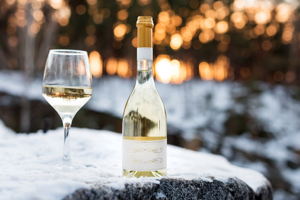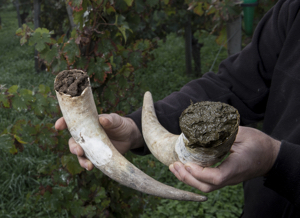If you are a non-denominational wine drinker, you may choose to drink crisp and fruity Sauvignon Blancs and pretty-in-pink Provence Rosés during the dog days of summer. Then as soon as the first bite of winter’s chill hits the air, you switch to rich and dark Cabernet Sauvignons and Syrahs to warm your soul through those bitter winter months.
However, there are those of you who eschew the “wine rules” and want to continue to enjoy your white wines between November and March. Yet, a Sauvignon Blanc might not be ideal – you want a white wine that will wrap you in a warm embrace. You are looking for richer, fuller bodied white wines that have the depth and structure of reds, but with the fruit flavors, aromatics and lack of tannins that white wines bring to the glass. If this sounds like you, read on because I have some excellent recommendations for the best types of white wines you can keep drinking all winter long.
Chardonnay
Chardonnay is an incredibly versatile grape and can make wine in lots of different styles, from steely and restrained (Chablis, France) all the way to rich and buttery (California). For winter drinking, select a Chardonnay from a warm climate area like California, Australia or Chile. These wines are often aged in oak and have a big, round texture with tropical fruit flavors of pineapple and mango, along with obvious oak influences.
Daou Vineyards Chardonnay 2018 ($16)

Viognier
Viognier has the creaminess of Chardonnay, but with more floral aromas and less acidity – think honeysuckle, peaches and roses. For a richer style, select a Viognier from California, Australia or Rhone, France.
Yalumba Viognier Eden Valley 2016 ($15)

Rhône whites
Rhone-style white wines are made from a blend of white grapes that hail from the Rhone Valley in France, although many warmer wine regions make this style of wine, such as Paso Robles, CA. The primary grape varieties in these blends can include Roussanne, Marsanne, Viognier, Grenache Blanc and Pinot Blanc. These are rich, bold whites with mouthwatering flavors of lemon, apricot, oranges and pastry.
Tablas Creek Vineyard Patelin de Tablas Blanc Paso Robles 2017 ($20)

Pinot Gris
Pinot Gris (hailing from France) is actually the same grape variety as Pinot Grigio (hailing from Italy), but the wines are produced in different styles. Whereas Pinot Grigio is light bodied with citrus flavors, Pinot Gris is richer and creamier with flavors of honey, ginger and clove alongside fruity pear, peach and nectarine.
Eyrie Pinot Gris Willamette Valley 2017 ($20)

Gewurtztraminer
This grape from Germany and Alsace, France is intensely aromatic and often made with small amounts of residual sugar, giving it a touch of sweetness. The texture is almost oily on the palate and it displays warm aromas and flavors of ginger, incense, honey and allspice with a very characteristic rose petal aroma and tropical fruit flavors of pineapple, grapefruit and apricot.
Trimbach Gewurztraminer 2016 ($22)

So light a fire in the fireplace, snuggle up under a fuzzy blanket and wrap your hands around a delicious glass of winter white wine to warm your soul. Cheers!

